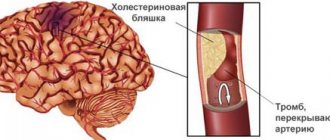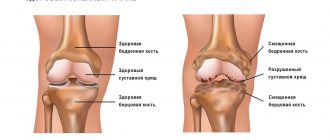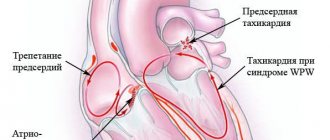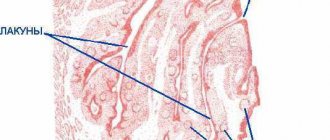Diabetes mellitus is a serious disease in which almost all metabolic processes in the body are disrupted, which leads to malfunctions of various organs and systems.
One of the most serious complications of diabetes can be diabetic coma. The consequences of coma due to diabetes mellitus can be fatal for the victim if urgent medical assistance is not provided in time.
Types of diabetic coma
There are several types of comas in diabetes, this is due to the fact that the hormonal imbalance that occurs as a result of this disease affects many processes in the body and, depending on the preponderance of compensatory mechanisms in one direction or another, a diabetic may experience a coma:
- Ketoacidotic;
- Hyperosmolar;
- Lactacidemic;
- Hypoglycemic.
Such a variety of types of comas characterizes the severity of diabetes mellitus, in the absence or incomplete treatment of it. All of the above comas are acute complications of diabetes mellitus, but some of them require a fairly long time interval to develop. Let's take a closer look at each condition and its consequences for the patient's body.
Early symptoms of diabetic coma can be suspected by testing blood sugar
Diagnostic methods
To make it easier to distinguish one subspecies from another, we recommend using our summary table. When using it, it will be easy to understand what type of coma may occur or has already occurred in the patient.
| Sign | Ketoacidotic | Hyperosmolar | Hyperlacticidemic | Hypoglycemic |
| Development speed | slowly | slowly | fast | fast |
| Patient behavior | passive | passive (rarely excited) | Passive (sometimes excited) | excited |
| Breath | Deep, noisy | Normal, superficial, frequent | Noisy, deep | ordinary |
| Smell of acetone | determined | absent | absent | absent |
| Leather | Dry, cold | dry | Dry, pale | wet |
| Eyeball tone | demoted | Sharply reduced | normal | normal |
| pupils | narrowed | normal | normal | Wide |
| convulsions | No | In 30% of patients | No | There is |
| Blood pressure | downgraded | Significantly reduced | downgraded | Normal, slightly increased |
Ketoacidotic
This type of coma, despite the severity of the condition, develops quite slowly and is associated with decompensation of metabolic processes in the diabetic’s body. A ketoacidotic state can occur with relative or absolute insulin deficiency. What is ketoacidosis?
The term diabetic ketoacidosis refers to a metabolic disorder that results in excessive accumulation of glucose and ketone bodies in the blood plasma. This occurs due to an insufficient amount of insulin in the blood, which is a kind of key for the penetration of glucose into the body's cells.
Mechanism of development of ketoacidotic coma
As a result of a violation of carbohydrate metabolism, cells begin to experience an energy deficit (sugar is all in the blood), due to which the process of lipolysis is activated - the breakdown of fats. The metabolism of fatty acids accelerates, which leads to the formation of an increased number of metabolic products of lipid metabolism - ketone bodies. Normally, ketone bodies are excreted from the body through the urinary system with urine, but the rapid increase in the concentration of ketone bodies in the blood cannot be compensated by the work of the kidneys, which leads to the development of ketoacidotic coma.
There are 3 successive stages of development of ketoacidotic coma:
- Moderate ketoacidosis may last several weeks. Symptoms are mild.
- Decompensation of ketoacidosis, symptoms of ketoacidosis begin to increase.
- Actually a coma.
Symptoms and consequences
Ketoacidotic state is a consequence of long-term decompensation of diabetes mellitus. The clinical picture during the development of such a coma is of a peculiar nature and consists in the development of symptoms such as:
- Severe weakness and exhaustion.
- Strong thirst and large volume of urine excreted.
- Drowsiness, loss of appetite, nausea.
- Smell of acetone on breath.
- Blush on the cheeks.
Patients have a high level of glycemia in their blood – more than 16 mmol/l; ketonemia more than 0.7 mmol/l; up to 50 g of sugar is detected in the urine.
Ketoacidotic coma requires immediate treatment, otherwise it can lead to permanent loss of all types of reflex activity and deep damage to the central nervous system.
Causes of coma in diabetes
Based on the above classification, the causes of coma differ, including:
Ketoacidotic:
- late diagnosis;
- insufficient dose of insulin or discontinuation of the drug;
- the use of low-quality insulin (occurs as a result of improper storage of the medicine or its expiration date);
- violation of the diet prescribed by the doctor (intake of alcohol, fats or easily absorbed fats);
- starvation;
- suicide attempt.
Patients with diabetes mellitus who are in one of the following statuses are at risk:
- pregnant women;
- patients with infectious diseases who accidentally joined a person;
- patients taking diuretics or glucocorticoids for a long time;
- athletes and people with increased nervous tension;
- patients who have undergone injury or surgery.
Hypersmolar:
- Any dehydration (diarrhea, increased urination while taking diuretic medications);
- a large amount of carbohydrates entered into the body with food or an overdose of glucose;
- heavy bleeding;
- concomitant disease (diabetes insipidus);
- hemodialysis.
At risk are patients with diabetes mellitus who are in a state that increases insulin deficiency, including:
- any associated disease;
- injury;
- surgical intervention;
- chronic therapy with insulin antagonists.
Lactic acidotic:
- the presence of an infection in the body or an inflammatory process;
- the formation of hypoxemia (usually due to cardiac or respiratory failure);
- chronic liver or kidney diseases with chronic failure of these organs;
- previous myocardial infarction;
- heavy bleeding;
- taking biguanides (such drugs should be administered to a patient with diabetes mellitus only on the recommendation of a specialist);
- alcoholism in the chronic stage.
Hypoglycemic:
- overdose of insulin or hypoglycemic drugs;
- eating low-carbohydrate foods after an insulin injection, as well as abstaining from eating completely after an injection;
- intense physical activity;
- treatment with glucose-lowering drugs;
- taking salicylates.
These reasons are not the only ones, but the most common.
Hyperosmolar
Hyperosmolar coma, or otherwise called hyperglycemic coma, is the result of a significant increase in the concentration of glucose in the patient’s blood. Hyperosmolar coma is an extreme degree of disturbance of carbohydrate metabolism, in which there is an increase in osmotic pressure in the liquid part of the blood - plasma, which leads to a disruption of the rheological (physical and chemical) properties of the blood and the activity of all organs. In hyperglycemic coma, there may be an increase in blood sugar of more than 30 mmol/l when the norm is no more than 6 mmol/l.
Symptoms
The victim experiences severe dehydration, up to dehydration shock. Often, before the development of hyperosmolar coma, the patient does not know at all that he has diabetes. This type of coma most often develops in people over 50 years of age against the background of latent type 2 diabetes mellitus, i.e. insulin-resistant. It develops hyperglycemic gradually, and accordingly, the symptoms increase slowly. Main symptoms:
- General weakness;
- Dry mucous membranes and thirst;
- Drowsiness;
- Increased urination;
- Decreased elasticity of the skin;
- Dyspnea.
Symptoms may not be noticed immediately, especially in men who tend to hide their problems.
Consequences
If hyperglycemic coma is not corrected in a timely manner, brain damage may occur with the addition of persistent functional disorders of any organs. Mortality in hyperosmolar coma reaches 50% and depends on the promptness of identifying this condition and the initiation of treatment measures.
Urgent Care
In order to correctly provide the necessary first aid, the first rule is to assess the situation that led to a loss of consciousness in a person or to the onset of a precomatose state, so as not to begin providing first aid for hypoglycemia to a patient who has fallen into a ketoacidotic coma.
Once you have determined what kind of coma (precoma) the patient has, you can proceed to action. Regardless of the type of coma, the first thing you need to do is call an ambulance and explain to them in detail what happened and clarify about diabetes.
Ketoacidotic:
- Laying the patient on his side will prevent vomit from entering the respiratory tract if vomiting begins.
- Monitor your heart rate and blood pressure to inform the emergency team of your observations.
- If the patient has acetone odor from the mouth, 5 units of short-acting insulin can be administered once.
For hyperosmolar coma, the algorithm of actions is the same as for the previous one, plus we recommend wrapping the patient up. In addition, it is necessary to measure your blood sugar level and, if it is too high, inject short-acting insulin. In addition, in the case when loved ones are able to put a drip on the patient, it is recommended to administer saline solution into the body at a rate of one drop per minute.
For hyperlactic acidemic coma, the algorithm of actions is the same as for the previous two.
First aid for hypoglycemic coma differs from the previous ones in that the patient must be given a piece of sugar to dissolve or fed with food containing easily digestible carbohydrates (cookies, white bread).
If the patient is in a faint or near-fainting state, it is necessary to give him warm sweet tea or water. Lay him on his side and, if possible, inject 1 ml of glucagon intramuscularly.
Expert opinion
Sergey Velichko
Neurologist, 21 years of experience
It is important that if the patient has already lost consciousness, do not force liquid into him, he may choke.
Lactacidemic
Lactic acid coma is also called lactic acid coma and develops more often than other types of emergency conditions in diabetes. Lactic acid coma is the most dangerous acute condition, with mortality reaching 75%. This condition can develop against the background of provoking conditions:
- Massive bleeding;
- Myocardial infarction;
- Generalized infectious process;
- Heavy physical activity;
- Kidney or liver failure.
As a result of lactic acidemia, ketone bodies and pyruvic acid are broken down in the blood with the formation of an increase in the concentration of lactate and a decrease in pyruvate - chemicals that shift the acid-base balance of the blood to the acidic side. In 30% of victims, hyperosmolar coma is initially noted.
Clinical picture
The condition of patients is rapidly deteriorating, and negative dynamics are observed. The onset is usually sudden, with severe development of symptoms. Diabetics note:
- Severe muscle pain and weakness;
- Drowsiness or, conversely, insomnia;
- Severe shortness of breath;
- Abdominal pain with vomiting.
With further deterioration of the condition, convulsions or areflexia associated with muscle paresis may occur. These symptoms arise as a result of brain damage due to energy deficiency and disturbances in the ionic composition of the plasma. Even with proper and timely treatment, the prognosis for a victim of lactic acidemia coma is unfavorable.
Symptoms
Coma does not occur instantly, usually everything happens gradually and there is time to change everything. On average, 1 to 3 days pass before the patient loses consciousness and falls into a “deep sleep.” The accumulation of ketone bodies and lactose is also not a quick process. For most diabetic comas, the symptoms will be similar, except for the hypoglycemic state.
The first signs of an approaching coma are an increased need for fluid (the person is constantly thirsty) and frequent urination. General weakness, deterioration of health, and headaches are detected. Nervous excitement gives way to drowsiness, nausea appears, and there is no appetite. This is the initial stage of development of this condition.
After 12-24 hours, without receiving adequate treatment, the condition will begin to worsen. There will be indifference to everything that is happening around, there will be a temporary loss of reason. The last stage will be the lack of reaction to external stimuli and complete loss of consciousness.
Against this background, changes occur in the body, which not only a doctor can notice. These include: decreased blood pressure and weak pulse, the skin feels warm to the touch, and the eyes are “soft.” In hypoglycemic or ketoacidotic coma, the patient's mouth will smell of acetone or fermented apples.
With lactic acidosis, cardiovascular failure will manifest itself, pain appears behind the sternum and in the muscles, abdominal pain and vomiting may appear. Hyperosmolar coma develops more slowly than others (5-14 days), at the last stage of development, breathing becomes intermittent, with shortness of breath, but there is no smell from the mouth, the skin and mucous membranes become dry, facial features become sharper.
Hypoglycemic coma develops rapidly, and action must be taken immediately after diagnosis. At the initial stage, a sharp feeling of hunger appears. In a matter of minutes, a person develops general weakness, a feeling of fear and inexplicable anxiety appears. Tremors appear throughout the body and increased sweating.
If during this period the patient does not raise the glucose level, a small piece of sugar or candy is enough, then complete loss of consciousness will follow and, in some cases, convulsions may appear. External signs: the skin is moist to the touch, the eyes remain firm, muscle tone is increased, but after a while the skin will dry out and become dry, which can make the diagnosis difficult.
These are the main signs of the onset of a coma, but it is not always possible to accurately diagnose yourself, so do not rush to feed the patient sugar or inject insulin, the consequences may be irreversible.
Hypoglycemic
The most common type of coma that occurs as a result of a sharp decrease in blood glucose. Hypoglycemic coma develops quickly and more often affects patients with type 1 diabetes mellitus when the insulin dosage is incorrect or when physical activity is too high.
A decrease in blood sugar occurs when there is an inadequate concentration of insulin in the blood, which leads to the transfer of all glucose from the plasma into the cells. First of all, the nervous tissue of the brain begins to suffer from a lack of glucose, which characterizes the clinic of this condition.
Symptoms
Hypoglycemic coma is accompanied by a sequential development of symptoms:
- A sudden feeling of hunger;
- Rapid increase in weakness and drowsiness;
- Numbness of the limbs;
- The appearance of trembling and cold, sticky sweat;
- Loss of consciousness.
- Rare breathing.
Consequences
With the rapid provision of emergency assistance, which involves the administration of a 40% glucose solution intravenously, the hypoglycemic coma is quickly stopped, and the victim’s condition returns to normal. If there is no one near the victim and hypoglycemia develops, then the victim may develop severe disturbances in the functioning of the central nervous system, including dementia and loss of some functions.
Based on the information received, the conclusion suggests itself - you should not risk your health by neglecting the treatment of diabetes. The consequences of a diabetic coma can be very diverse, from mild temporary disability. To the point of severe disability and death. So be careful about your health, get examined on time and follow the recommendations of your doctor.









